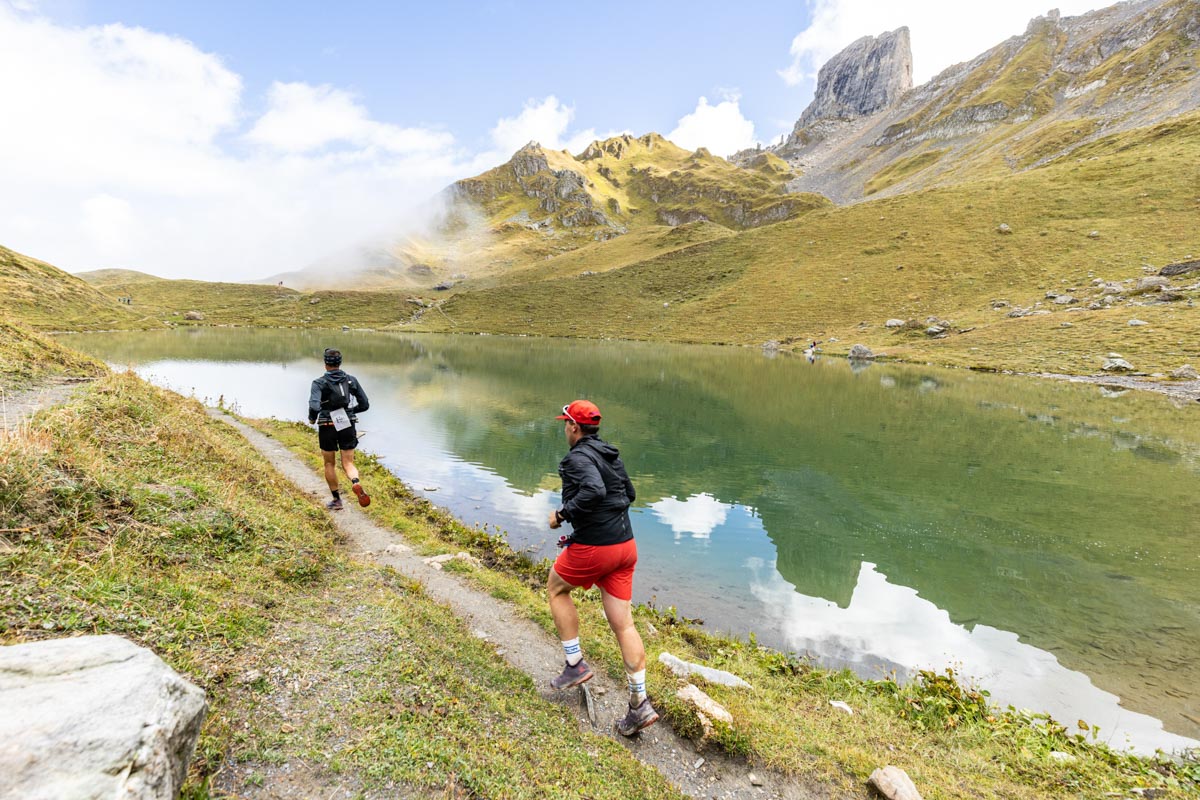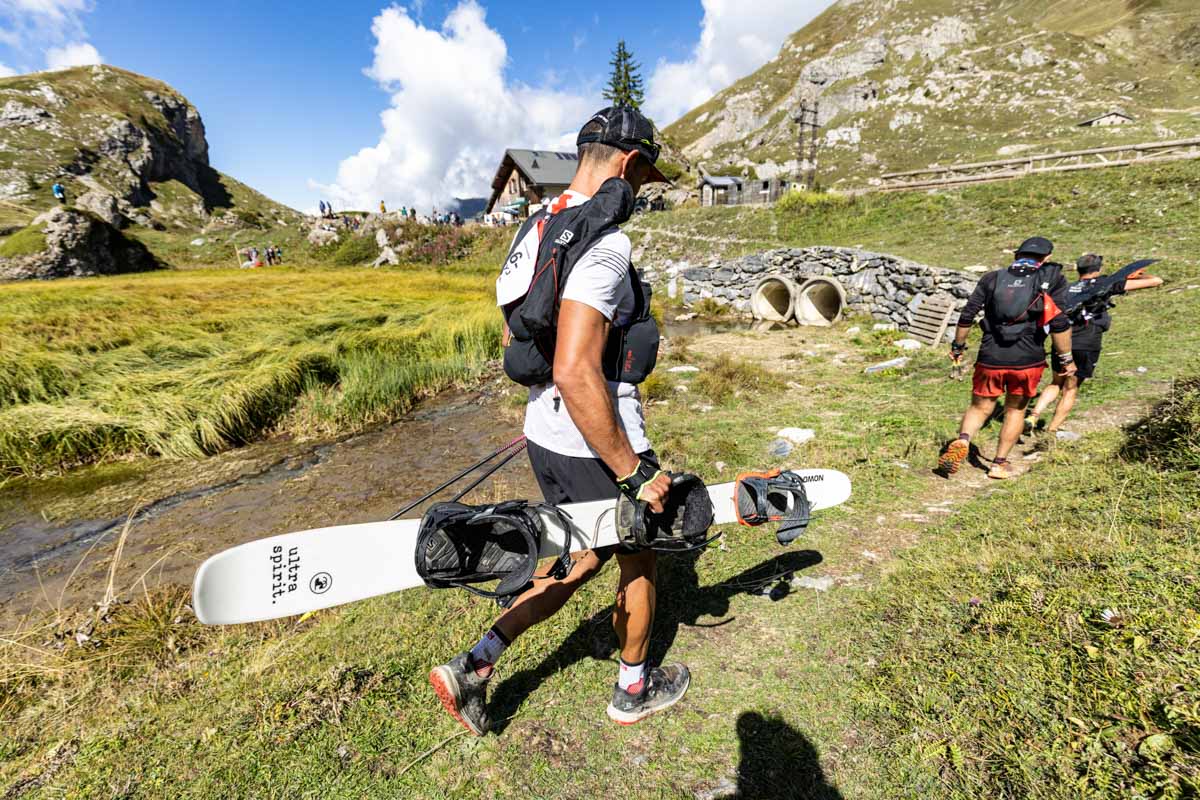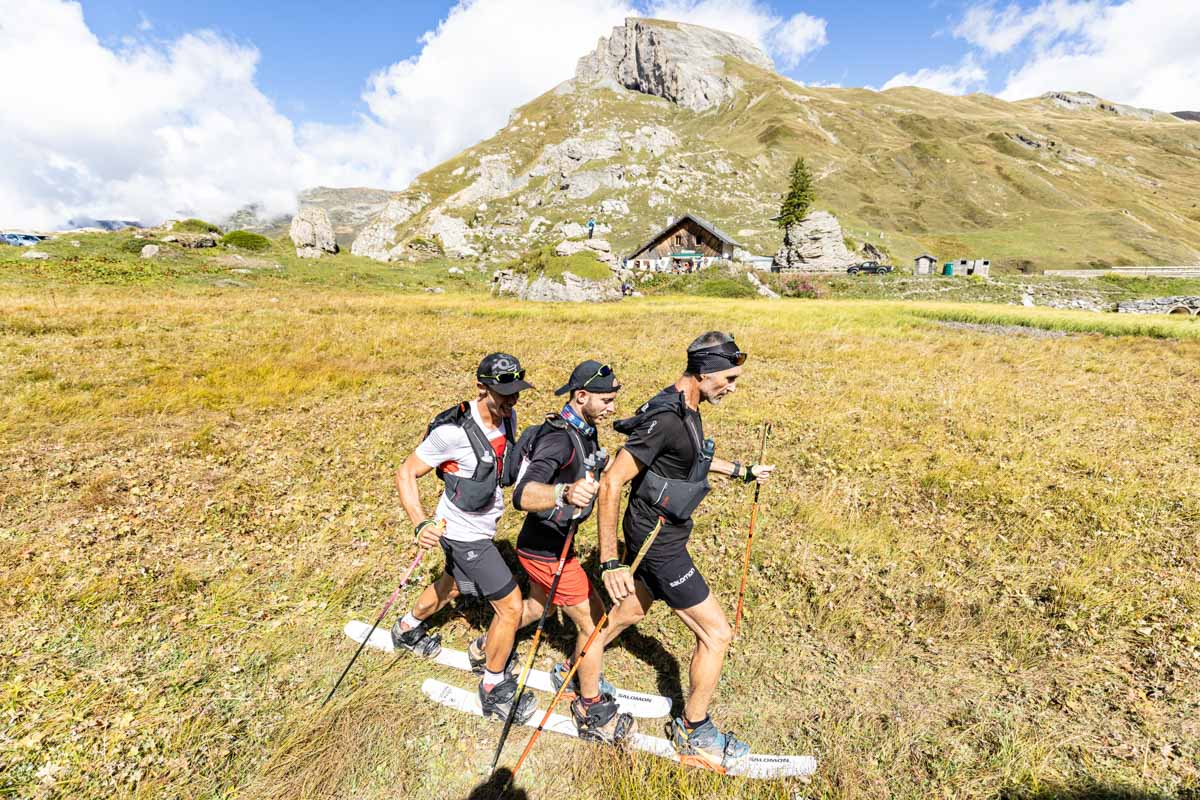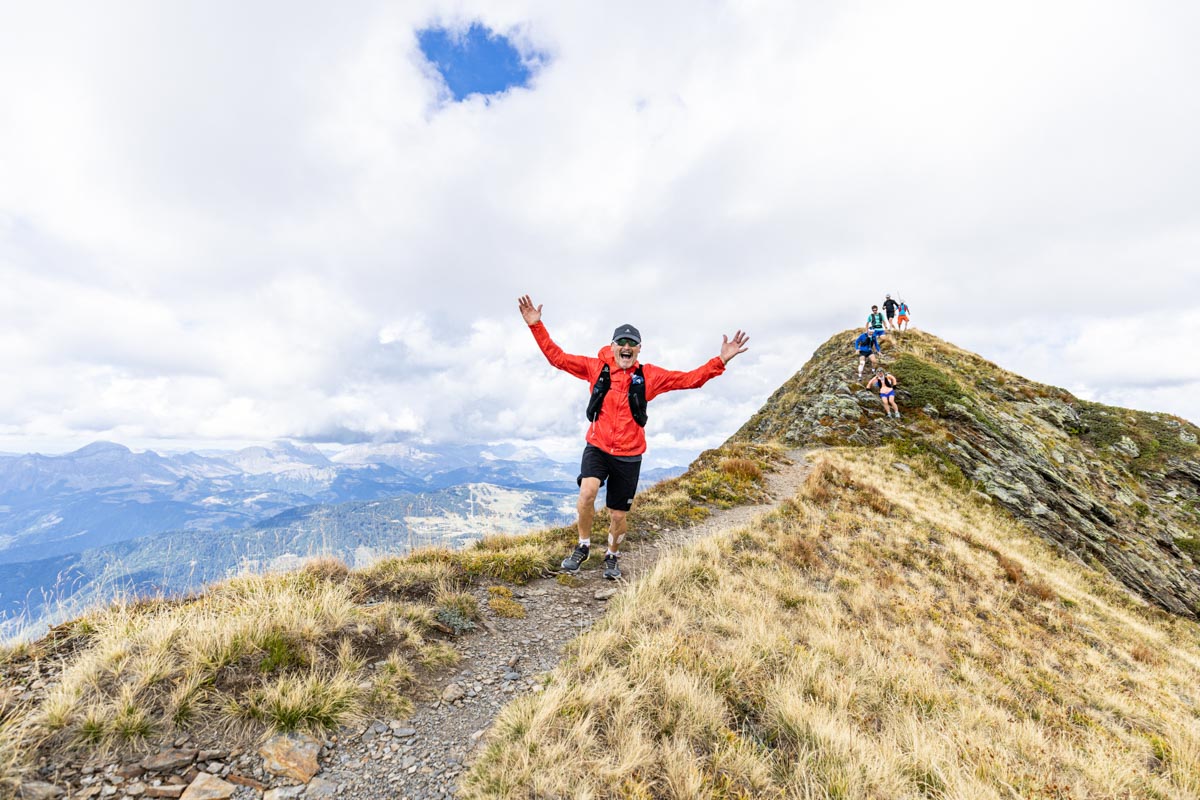The iconic French trail ultrarunner François D’Haene has run in some of the biggest mountain ultras in the world. When someone has won UTMB four times, the Hardrock 100, Diagonale des Fous, and countless other races, it’s fair to assume that they know something about what makes a good event. And as it turns out, it’s not all about setting a goal of going as fast as possible over rugged mountains.
The inaugural Ultra Spirit, created by D’Haene and his wife, Carline D’Haene, embodied the vision he has for the future of ultrarunning. The event included three days of running in the Beaufortain Massif of France, unique challenges, a phone-free experience, local food and drink, group bivouacs every night, and endless surprises for the participants.
After over a decade of trail ultrarunning, D’Haene felt like it was time to use his experience in the sport to create something unique. Wanting to share the area near his hometown of Beaufort, France, he explains, “It’s my turn to give some experiences and some ideas and some values.”
Based out of the Arêches-Beaufort region, the three-day event covered nearly 100 kilometers of trail in the area with participants camping at remote bivouacs each night. The event was part spirited competitive running and part cultural immersion in the region, and 25 teams of three people each were invited to come participate.
“We just want to show them how ultra life is for us, that it’s not just about racing, it’s not just about trail running. It’s more than that. It’s a way of life, it’s a good balance between many things.” And to make each day of running more about just the final finishing time, D’Haene and company threw in some unexpected twists and challenges.
In addition to creating a unique experience for the participants, D’Haene wanted to make the event as environmentally low-impact as possible. Using inspiration from the new Salomon campaign of Tomorrow is Yours, D’Haene wanted to “create something new for our future,” a trail running event where everything was sourced as locally as possible, and participants received time bonuses for arriving at the venue in an environmentally friendly manner.

The Ultra Spirit event showcased the Beaufort Massif of France. Photo: Ultra Spirit/Paul Viard Gaudin
Ultra Spirit Is Not a Traditional Race
D’Haene understands the importance of running fast in a race setting, but he also understands the importance of the community created by running events. He chose the 25 teams for this year’s event not based purely on race resumes. Instead, he wanted a mix of elite runners and those who didn’t regularly vie for the front of the field, but love the sport.
“We want the people who can have fun and finish it,” D’Haene explains. He felt it was important that the three-person teams all worked well together and got along. After all, they would spend every waking and sleeping hour together for three days.
One of the goals of Ultra Spirit was to have all of the runners finish as close to each other as possible each day by making a day more than just running. D’Haene admits, “It was very, very hard to make them arrive all together.”
But by posing in-race challenges to all teams that required skills that decidedly weren’t running, and allowing the slower teams to take shortcuts on the course, he was fairly successful in getting everyone to the bivouac sites together. “There are not many races where you can arrive one hour after Jim Walmsley. And he was never in first position, so I think it was a bit of a success.”
Throughout the three days, teams were faced with 12 activities, both during the runs and at night. D’Haene believes that there are fun ways to both help people stretch their personal limits and learn valuable running and mountain skills at the same time. After a full day of running, participants were sent out for a night activity, even against the protest of tired legs.
“The idea was to show them that after 12 hours, you think you are totally destroyed, and you can do nothing. But finally, if you have a small warm up, then your body can go again. And maybe just after a small activity, you will feel better and better,” D’Haene explains. “It was to [teach] them how to run with a headlamp. Because everybody has a headlamp, but some of them did not know how to run with [it].”
The activities didn’t stop with a night run. During one of the days, participants had to get in a mountain lake and stay in for 22 seconds, without having the benefit of a watch to time themselves. While some participants initially viewed the submersion as a silly game, they came out of the water feeling refreshed with a new outlook on the benefits of a cold soak for recovery. It was a game, a challenge in the middle of a running event, but it was also so much more than that. “Yes, we just want to play, but in a way that it can [teach] you something,” according to D’Haene.
Not all the challenges were necessarily a learning experience. One would argue that the evening Beer Mile at the end of the second day was just pure fun.

Participants were able to get bonus points for various challenges. Photo: Ultra Spirit/Paul Viard Gaudin
Human Connection at Ultra Spirit
Creating an event that promoted human connection was important to D’Haene. When participants arrived, they all put their phones away for the duration of the event. For the next three days, they ran together, ate together, and slept in group bivouacs high in remote locations. The event wasn’t just about the running — equally as important was the time at camp, sharing, relaxing, and eating. Participants were fed local food, tasted local Beaufortain cheese, and drank area beer as well as wine made by the D’Haene family.
While initially D’Haene envisioned growing the event in the future, he realizes the value of having a small number of people. “In the end, it was like a big, happy family.” He credits the participants, volunteers, event partners, and, most importantly, his wife for the atmosphere. Not only did participants get to know themselves and their teammates better, but the intimate atmosphere of the event also allowed everyone to mix and mingle, providing the opportunity to develop deep human connections.

Runners finishing off one of the unique non-running challenges. Photo: Ultra Spirit/Paul Viard Gaudin
Ultra Spirit’s Commitment to Sustainability
D’Haene understands the environmental impact of trail ultrarunning, from the carbon emissions associated with travel to the burden put on the local trails and communities. Ultra Spirit aimed to reduce the environmental footprint of the weekend with all aspects of the event, from minimizing the amount of energy used and waste created to promoting the local economy.
Even the timing of the event, mid-September and still in the middle of D’Haene’s race schedule, was based on the local impact. Of the timing of the event, he said, “It’s very important that the cows can eat the grass and the herbs where we make the camp, and we want the camp very high and very wild.”
So, in order to provide the experience that he wanted for the runners, while still being respectful of the local farmers and land, he chose a date that other elite racers, especially those who understand the stresses associated with event promotion, would shake their heads at.
Ultra Spirit aimed to do everything as locally as possible. Supplies were sourced within a 100-kilometer radius. Food was all local, from the beer to the cheese to the bread, and water in camp was limited, and in one instance, participants had to haul their own water from a nearby source. Dry toilets were used for human waste, and participants didn’t get a full shower until the end of the three days.
There were no plastic bottles, and even race signs were made of wood so that they could be reused year after year. To hold themselves accountable, the event weighed all waste produced and made plans for further improvement.
The Future of Ultra Spirit
D’Haene and his wife have every intention of carrying on the event in the future. The experience of putting on an event, although difficult, time-consuming, and stressful at times, was ultimately a positive experience for the entire family.
D’Haene is philosophical about the type of event he wants to put on. “In three years […], maybe five years, maybe we stopped racing, we continue to run. And if we had to take part at one event, which event it will be? And we tried to create this event.”
Call for Comments
- What other events share some of the values and layout of Ultra Spirit?
- Were you one of the lucky runners to participate in its inaugural edition?



